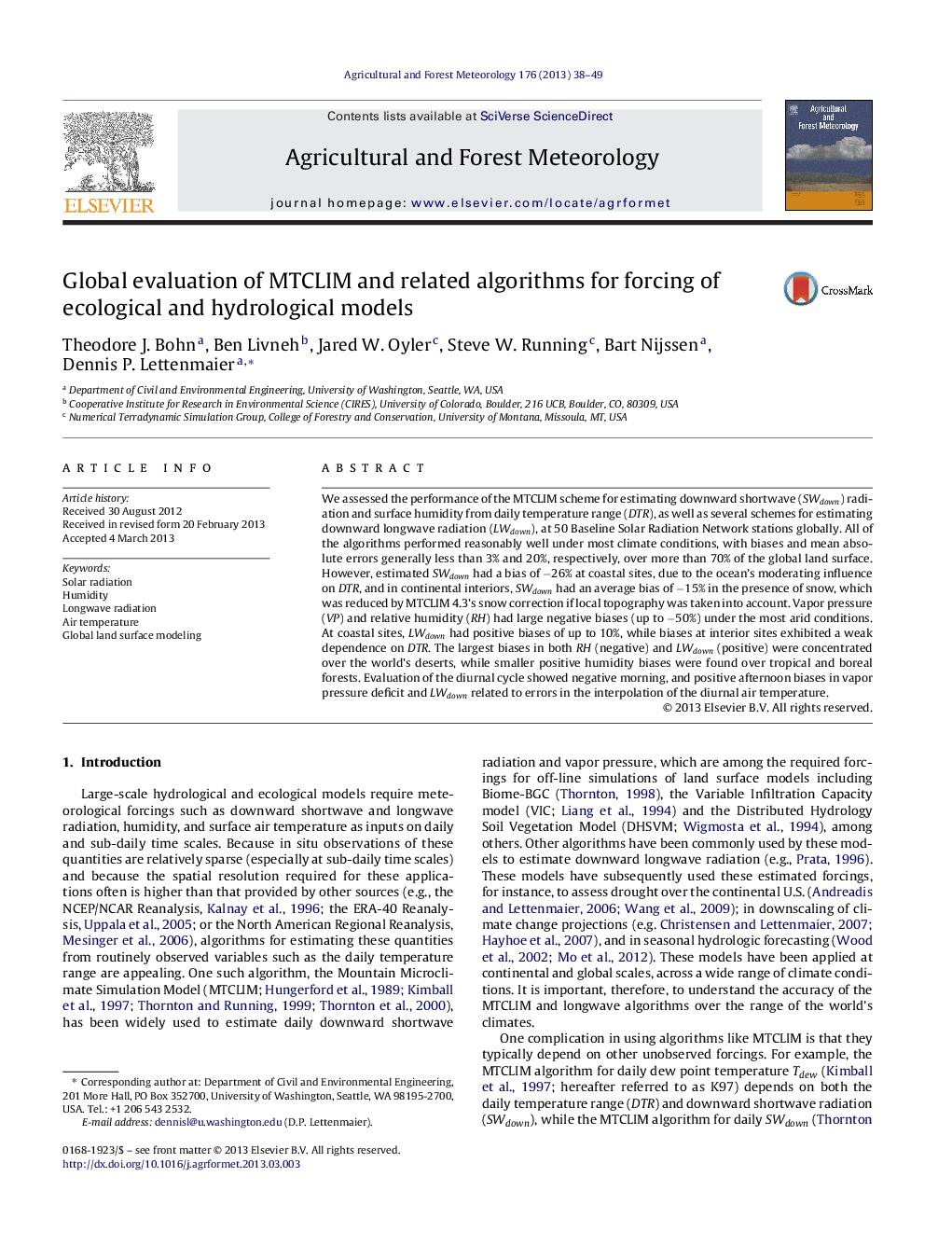| Article ID | Journal | Published Year | Pages | File Type |
|---|---|---|---|---|
| 81806 | Agricultural and Forest Meteorology | 2013 | 12 Pages |
•Algorithms for daily shortwave, longwave, and humidity performed well, globally.•Shortwave biases at coasts for low daily temperature range.•Humidity and longwave biases concentrated in world's deserts.•Good overall performance of air temperature diurnal cycle scheme.•Morning/afternoon biases in air temperature caused biases in humidity and longwave.
We assessed the performance of the MTCLIM scheme for estimating downward shortwave (SWdown) radiation and surface humidity from daily temperature range (DTR), as well as several schemes for estimating downward longwave radiation (LWdown), at 50 Baseline Solar Radiation Network stations globally. All of the algorithms performed reasonably well under most climate conditions, with biases and mean absolute errors generally less than 3% and 20%, respectively, over more than 70% of the global land surface. However, estimated SWdown had a bias of −26% at coastal sites, due to the ocean's moderating influence on DTR, and in continental interiors, SWdown had an average bias of −15% in the presence of snow, which was reduced by MTCLIM 4.3's snow correction if local topography was taken into account. Vapor pressure (VP) and relative humidity (RH) had large negative biases (up to −50%) under the most arid conditions. At coastal sites, LWdown had positive biases of up to 10%, while biases at interior sites exhibited a weak dependence on DTR. The largest biases in both RH (negative) and LWdown (positive) were concentrated over the world's deserts, while smaller positive humidity biases were found over tropical and boreal forests. Evaluation of the diurnal cycle showed negative morning, and positive afternoon biases in vapor pressure deficit and LWdown related to errors in the interpolation of the diurnal air temperature.
